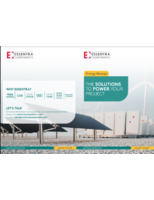Overview of PTFE Fillers Used In Rotary Seals, Wear Rings, Piston Rings and Related Sealing Products
PTFE (Polytetrafluoroethylene) has become a commonly used material in sealing applications where other materials do not meet temperature, chemical compatibility, friction, or wear requirements. Many customers are unaware that “fillers” may be added to PTFE in order to enhance certain characteristics not found in virgin PTFE. Virgin PTFE possesses “creep” behavior that reduces effectiveness in mechanical applications.
Significant deformation of virgin PTFE may occur over time even at room temperatures. We recently had a customer that indicated that the ID (Inside Dimension) of their virgin PTFE seals was significantly less than the requirement. This seals had been in inventory for 6+ months and deformed over time without anything used to retain the original dimension/shape. Virgin PTFE also wears quickly. The use of fillers improves the physical attributes of virgin PTFE, including creep and wear resistance. Which filler to use certainly depends on the application. Some of the common fillers we have used to meet customer requirements include:
- Glass is the most common filler for PTFE. Widely used in hydraulic piston rings, glass gives good wear resistance, low creep, and good compressive strength. Glass also has excellent chemical compatibility. The percentage of glass varies between 5 and 40%. The major disadvantage is that glass-filled PTFE compounds are abrasive to mating surfaces, especially in rotary applications.
- Molybdenum disulfide (MoS2) improves wear resistance and further lowers the coefficient of friction. “Moly" is typically combined with other fillers (such as glass and bronze).
- Carbon imparts excellent compression (low deformation under load) and wear resistance, good thermal conductivity, and low permeability. Carbon-filled PTFE compounds are not as abrasive as glass-filled compounds, but they are still more abrasive than polymer-filled compounds. The percentage of carbon added varies between 5 and 15%. Carbon-filled compounds have excellent wear and friction properties when combined with graphite. Carbon fiber lends better creep resistance than carbon powder, but fiber is more expensive.
- Graphite is a crystal modification of high purity carbon. Its flaky structure imparts excellent lubricity and decreased wear. Percentages of this filler vary between 5 and 15%. Graphite is often combined with other fillers (especially carbon and glass).
- Bronze lends excellent wear resistance and thermal conductivity. Bronze-filled materials have higher friction than other filled PTFE compounds, but that can be improved by adding moly or graphite. Bearing and piston ring applications often use compounds containing 55% bronze – 5% moly. Bronze-filled compounds have poorer chemical resistance than other PTFE compounds. Bronze, when used as a filler, is added in percentages of weight between 40 and 60%.
- Ekonol® is thermally stable aromatic polyester. When blended with PTFE, it produces a composite material with excellent high temperature and wear resistance. Ekonol® will not wear mating metal surfaces, making it good for rotary applications. Ekonol®-filled materials are also good for food service.
- Polyimide is another type of polymeric filler offering superior wear and abrasion resistance. Polyimide-filled PTFE compounds have about the lowest friction properties of all filled PTFE materials, so they provide great performance in non-lubricated (dry) applications. They will not abrade mating surfaces (even soft materials such as brass, stainless steel, aluminum, and plastic). Polyimide is one of the most expensive PTFE fillers, however.
Glass Enhanced wear resistance.
Enhanced chemical resistance (except for alkali and hydrofluoric acid).
Molybdenum disulfide Enhanced non-stick properties.
Low static coefficient of friction.
Fairly good resistance to deformation.
Carbon Good thermal conductivity.
Good resistance to deformation.
Graphite Extremely low coefficient of friction. Fairly good compressive strength.
Good wear resistance.
Bronze Enhanced compressive strength.
Good wear resistance and high thermal conductivity.
Ekonol Superior heat and wear resistance
Non-Abrasive.
Not good in water
Polyimide Superior wear and abrasion resistant
Lowest friction
Determining the percentages or weights of fillers is not an exact science, but there are mechanical and thermal test results available for many of these PTFE fillers.
Chemical compatibility charts are also available to assist in selecting the proper filler for a given application. “Filled” PTFE products that have been produced for our customers include: bronze-filled PTFE rings for a master cylinder application; graphite filled PTFE in a pump sealing application; carbon filled PTFE rotary seal for a bearing company application; 15% glass and 5% Moly for a pharma customer in a rotary application; a 40% bronze filled PTFE wear ring for an FDA compliant application; 10% Ekonol PTFE for a spring energized seal; 25% carbon filled guide ring for a mixer MRO; and a 25% glass filled PTFE FDA compliant for a pharma agitator manufacturer.




